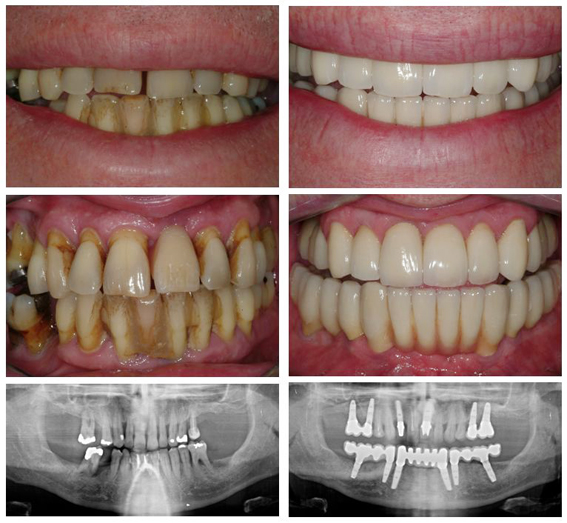
Periodontal Treatment
Uncategorized

Do you have periodontal disease; don’t be worried you are not alone. Many others have the same problem. Periodontal treatment is the first step in preventing tooth loss.
The word periodontal means “around the tooth.” Healthy gum tissue fits like a cuff around each tooth. Where the gum line meets the tooth, it forms a slight v-shaped crevice called a sulcus. In healthy teeth, this space is usually three millimeters or less.
Periodontal diseases are infections that affect the tissues and bone that support teeth. As the tissues are damaged, the sulcus develops into a pocket that is greater than three millimeters. Generally, the more severe the disease, the greater the pocket depth and bone loss. The enlarged pockets allow harmful bacteria to grow and make it difficult to practice effective oral hygiene. Left untreated, periodontal diseases may eventually lead to tooth loss and increase the risk of heart disease and systemic infections.

X-rays and a good dental examination are needed in order to recognize periodontal disease. However, periodontal treatment methods depend upon the type and severity of the disease. If the disease is caught very early (gingivitis), and bone destruction has not occurred, you may simply be given corrective periodontal scaling and instructions on improving your daily oral hygiene.
Even with these measures, some patients develop more severe periodontal disease that must be treated. The first step usually involves a special cleaning, called scaling and root planning. This procedure removes plaque and tartar deposits on the tooth and root surfaces. This helps gum tissue to heal and pockets to shrink, which makes it more difficult for plaque to accumulate along the root surfaces. This is sometimes referred to as “deep cleaning” and may recommend medications to help control infection and pain, or to aid healing.





